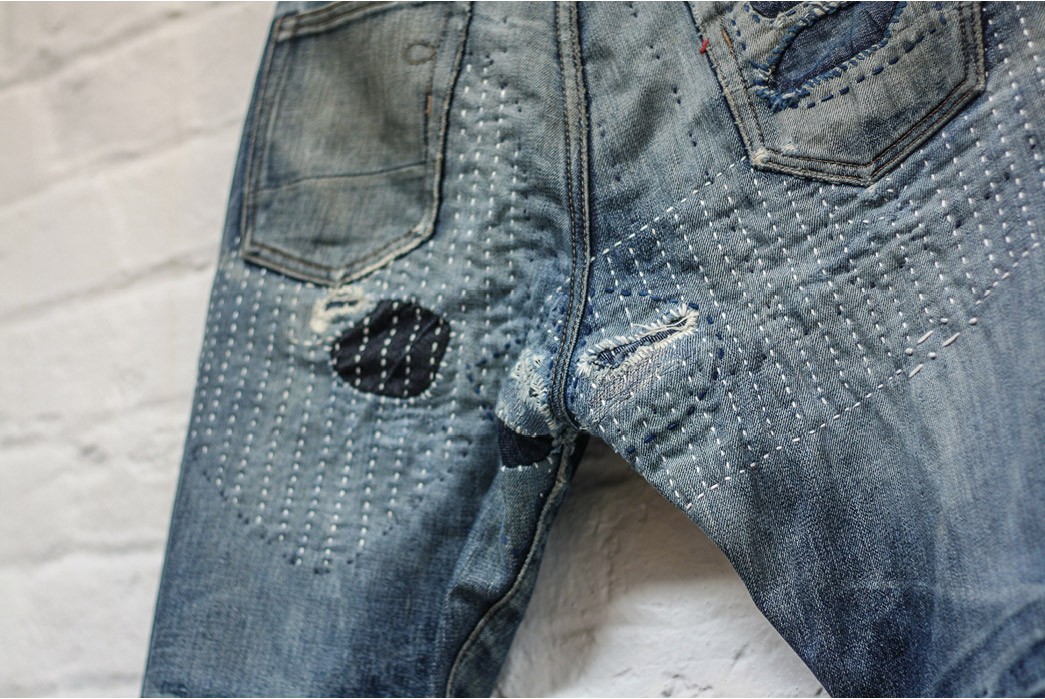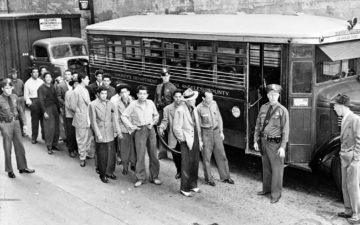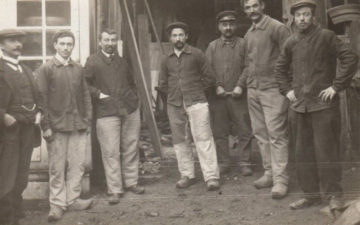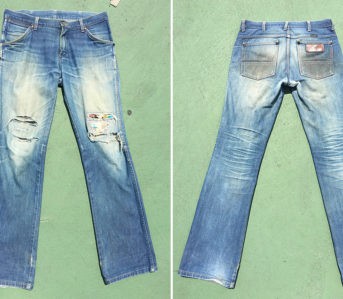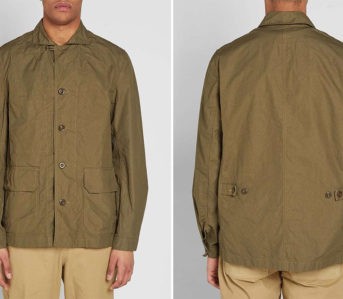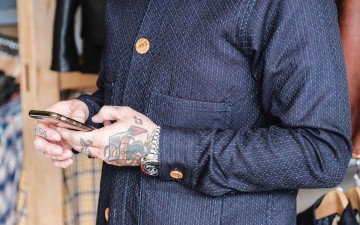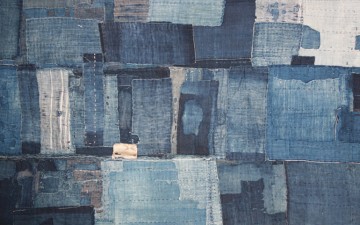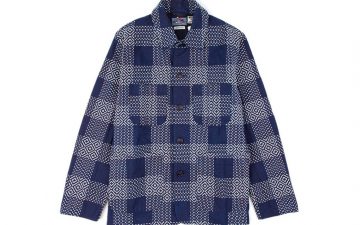An entire article on the simple running stitch might seem like overkill, but sashiko’s simplicity belies its deep history. This little piece of reinforcing thread began over a thousand years ago and has been a mainstay of Japanese peasants, martial artists, and even firefighters.
So spool up as we wind back on the past millennium of sashiko.
Sashiko is Born
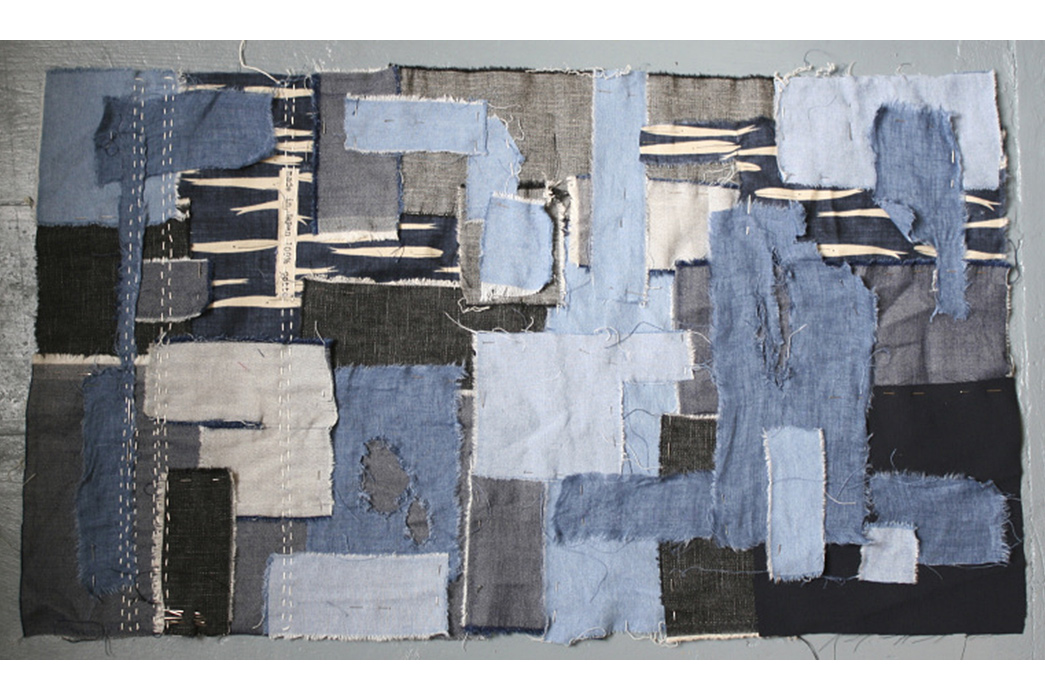
Sashiko Bag in progress. Image via Made by Toya.
According to textile historian Cynthia Shaver, the earliest recorded appearance of purely aesthetic sashiko-stitching was in the eighth-century. This monk’s robe featured the fastidious running stitch we call sashiko after the Japanese verb “sasu,” or “to pierce.”
From this point to the present day, sashiko came to be something more than a mere peasant’s stitch. More than just a way to mend and reinforce older garments.
The Basics
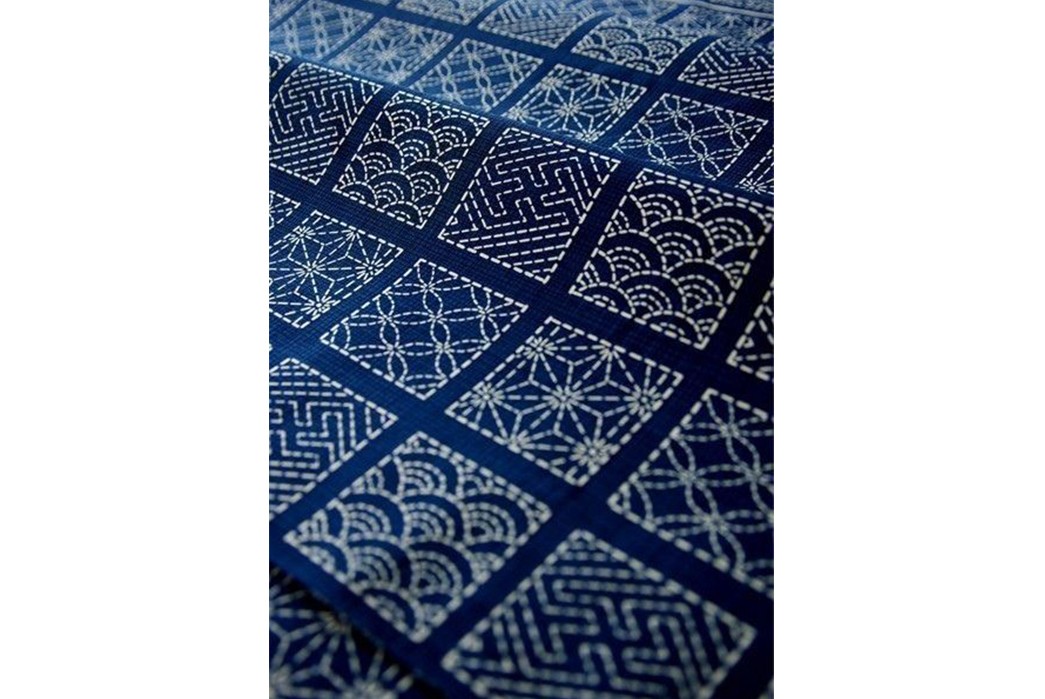
Sashiko Embroidery. Image via Pinterest.
Historically sashiko was used mostly for clothing, although there are instances of the stitch appearing on curtains, bags, and other housewares. Sashiko is typically done with a white thread on an indigo fabric, although the amount of indigo available varied from region to region.
A crucial element of sashiko is stitch consistency and, depending on region, this could vary from five to ten stitches per inch. This, of course, requires a steady hand and an immense amount of skill, something that Japanese artisans honed mainly during the winter months. Other regional variations included dye color and materials, with richer rice-producing areas having darker fabrics because they could afford to dip yarn in indigo vats multiple times and had greater access to imported cotton and wool. The stitching is done with two to three layers of a balanced-weave textile, meaning the warp and weft are the same thickness.
Practical Applications
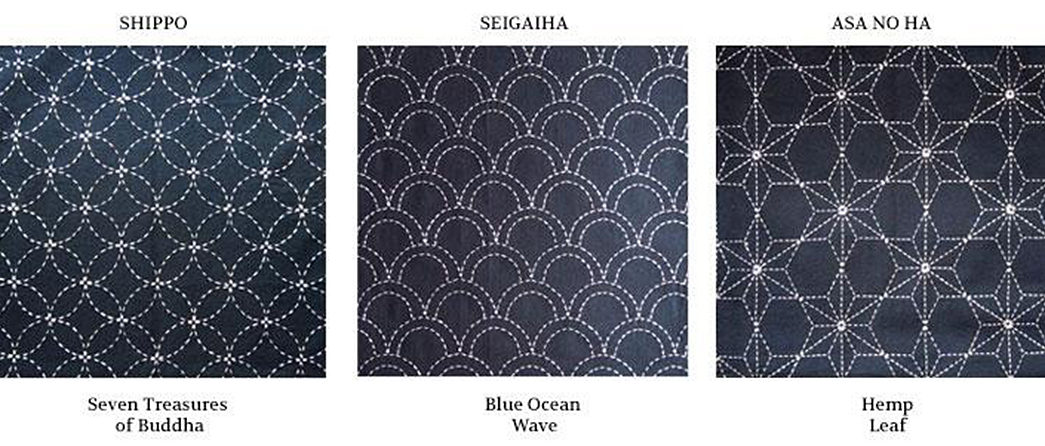
Sashiko patterns. Image via Kirikomade.
Before the widespread availability of industrially-woven materials, most textiles had a much looser weave. This made it quite a bit easier to stitch the fabric and in some cases the stitching even made garments warmer, as body heat warmed the air trapped between the layers. The extra thread also proved to be extremely absorbent. Artists exploited this characteristic to absorb dyes while martial artists exploited it to absorb sweat.
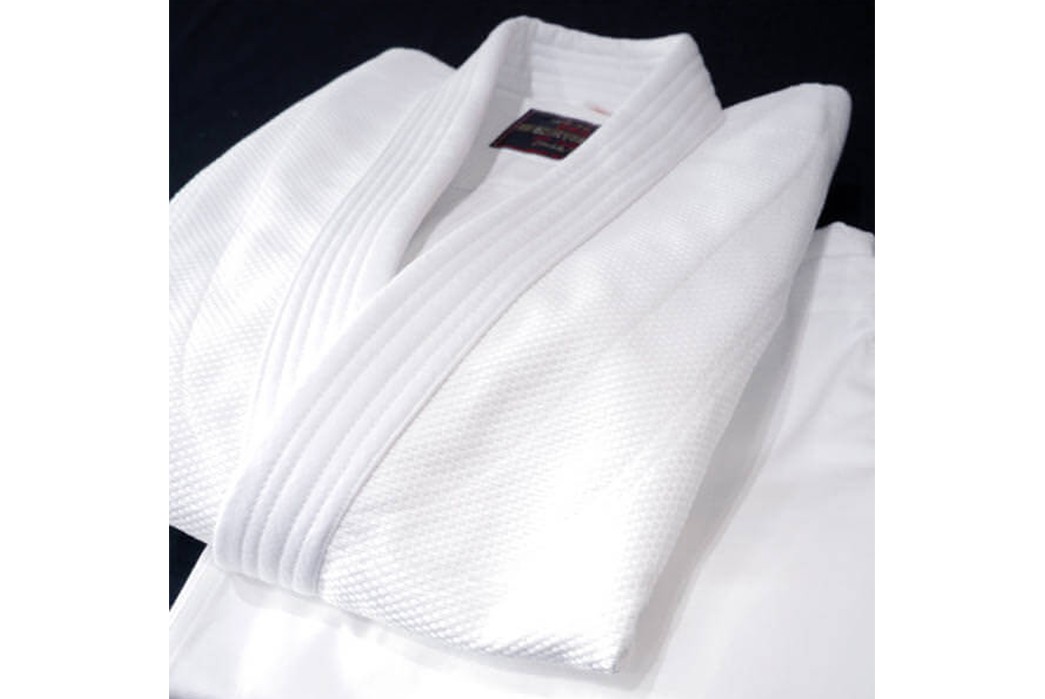
Sashiko-woven garment. Image via Seido Shop.
The martial arts Gi worn in Aikido has been, for quite some time, woven in the sashiko style. Sashiko was thick and strong, which was crucial for Aikido. It gave the uniforms durability, wicked away sweat, and, to the relief of the wearer, padding.
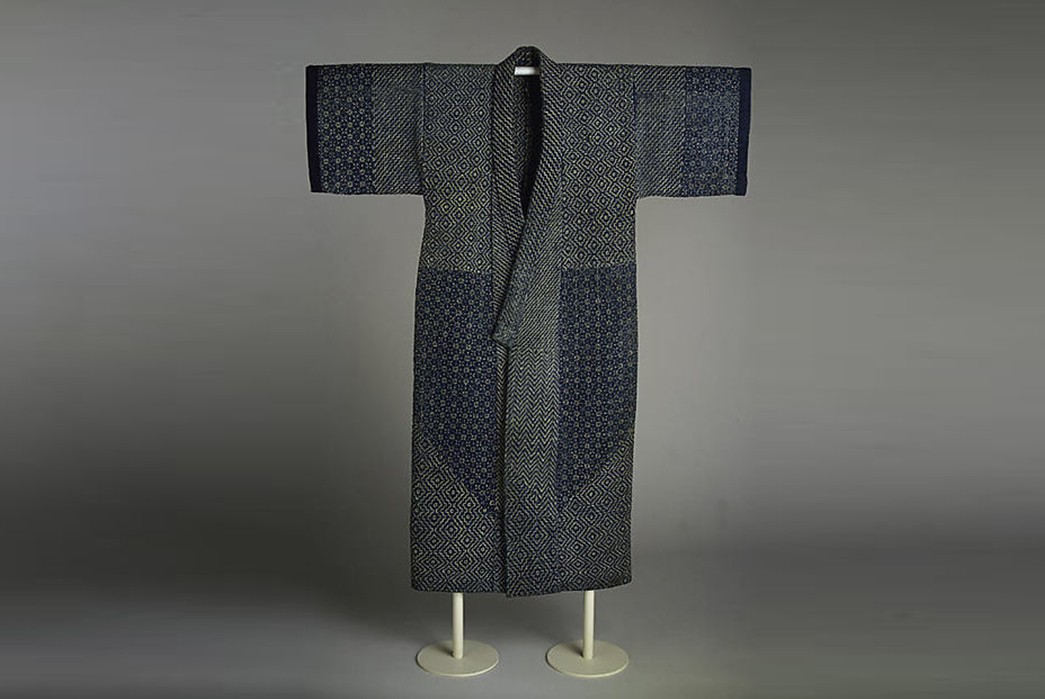
Kogin Kimono. Image via the Metropolitan Museum of Art.
The market for sashiko wasn’t extremely competitive, as it was largely a home-art, but the Kogin Kimonos were one exception to this rule. Kogin is a specific kind of sashiko, primarily based on a repeated diamond design. Kogin kimonos were usually made from a rough hemp and were an expected part of a woman’s dowry. The five to seven kimonos that served as dowry were also meant to serve as a barometer for the future bride’s talent and mental acuity, so these had to be stitched very, very well.
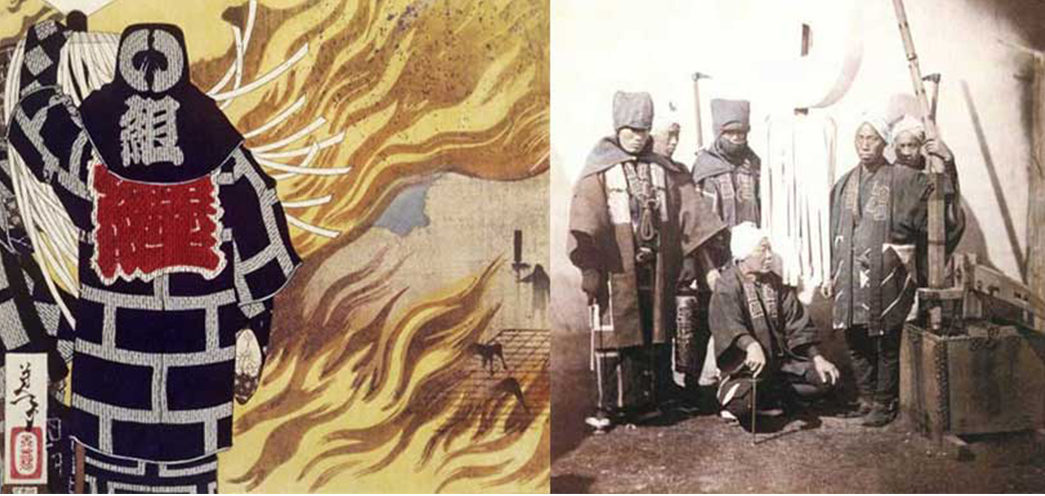
The coolest use of sashiko by far.
Perhaps the most amazing application of sashiko was its use by Japanese firefighters. There were several ranks of firefighters in Japanese cities, but only the common folk wore the heavily stitched sashiko garments shown above.
The townspeople began fighting fires in 1718 and their uniform evolved over time, but basically comprised of a long coat of three layers of cotton with sashiko stitching covering the entire garment. Quilted layers, socks, mittens, and even a hood completed the ensemble. This whole heavy-duty cotton uniform was designed for maximum absorption. Before entering a blaze, firefighters would douse themselves with water, allowing their uniforms to absorb as much as possible. Often, this would translate to as much as 70lbs of water or more.
Modern Repair
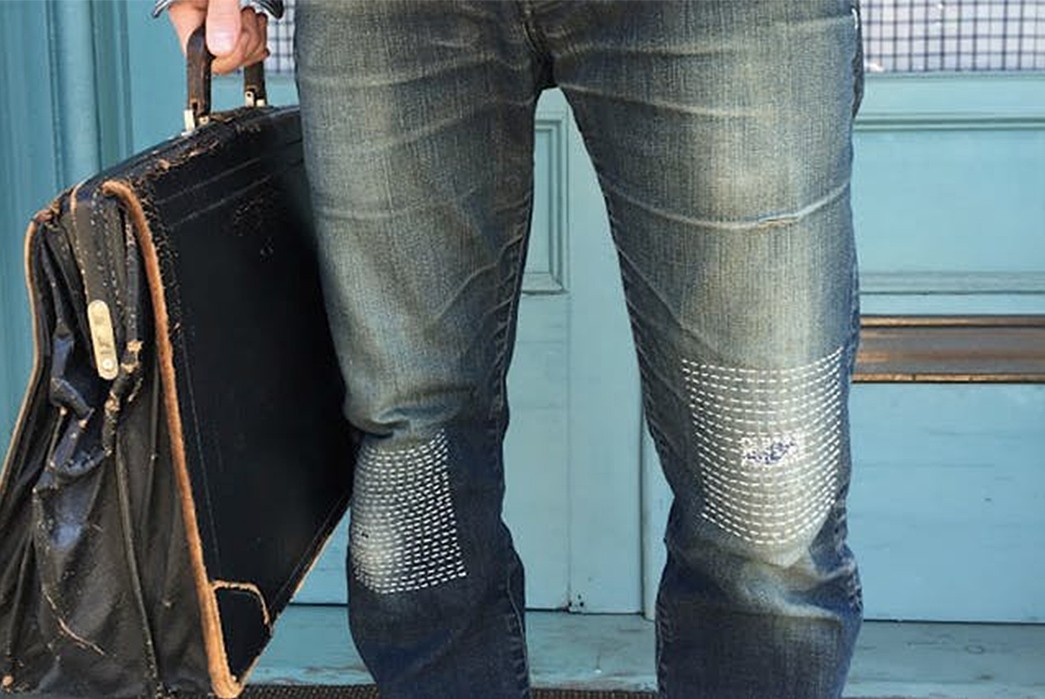
Sashiko knee-repair. Image via Apartment Therapy.
Sashiko repair on denim was something I was long skeptical of. I didn’t get it. But with a couple hours of research, it started to make sense. The geometric running stitch from Japan is incredibly adaptable and practical. Its ease, resiliency, aesthetic value, and firefighting absorbency all add up to make it an extremely desirable repair technique for those of you without immediate access to a darning machine.
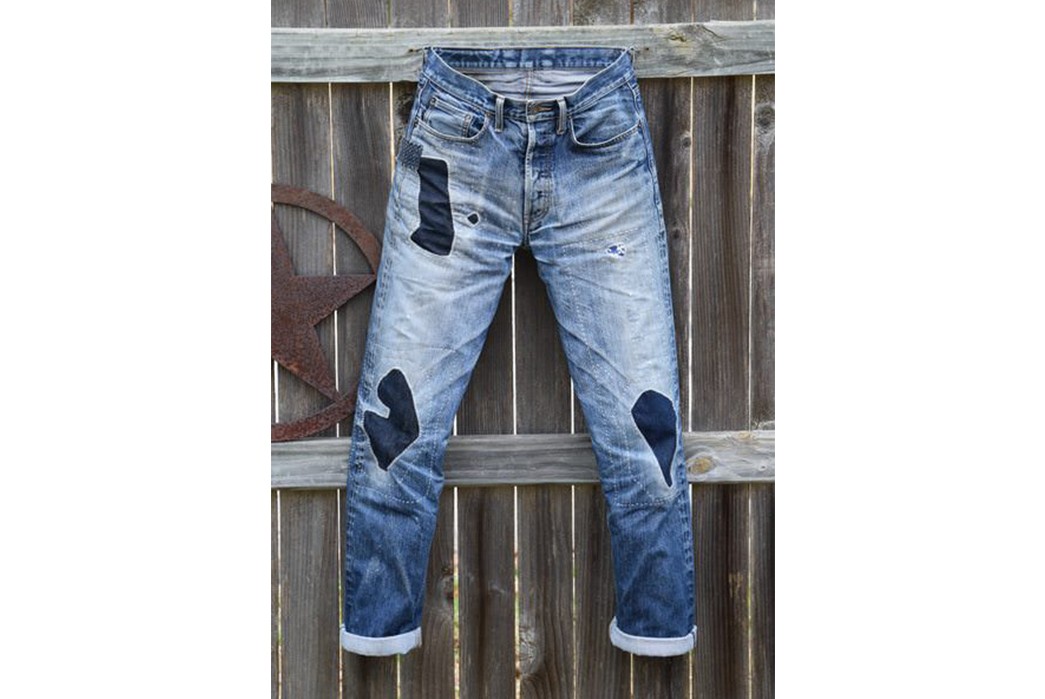
Repaired 3sixteen CS-100x jeans. Image via Reddit user Texassailor.
Sashiko, in the early days, was always made for personal or family use, giving it a unique homespun feel. No one’s sashiko was quite like anyone else’s. Those meticulous stitches reflected the personal wear and artistic vision of whoever took the time to actually stitch them.
As it did in medieval Japan, sashiko still toes the line between form and function. Its undeniable elegance has kept it a point of pride for Japanese (and now international) artisans, but at its very core it is a homegrown way to extend the life of and even improve regular old clothes.
Lead image via Fade Friday – Rogue Territory Stanton.

